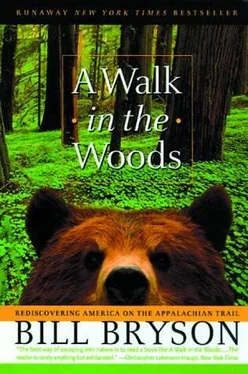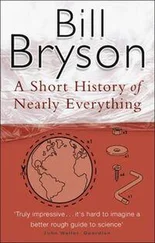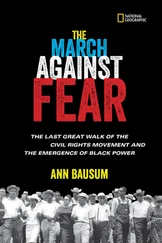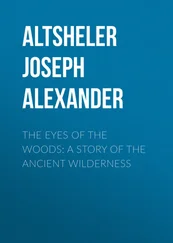Bill Bryson - A Walk In The Woods
Здесь есть возможность читать онлайн «Bill Bryson - A Walk In The Woods» весь текст электронной книги совершенно бесплатно (целиком полную версию без сокращений). В некоторых случаях можно слушать аудио, скачать через торрент в формате fb2 и присутствует краткое содержание. Жанр: Современная проза, на английском языке. Описание произведения, (предисловие) а так же отзывы посетителей доступны на портале библиотеки ЛибКат.
- Название:A Walk In The Woods
- Автор:
- Жанр:
- Год:неизвестен
- ISBN:нет данных
- Рейтинг книги:4 / 5. Голосов: 1
-
Избранное:Добавить в избранное
- Отзывы:
-
Ваша оценка:
- 80
- 1
- 2
- 3
- 4
- 5
A Walk In The Woods: краткое содержание, описание и аннотация
Предлагаем к чтению аннотацию, описание, краткое содержание или предисловие (зависит от того, что написал сам автор книги «A Walk In The Woods»). Если вы не нашли необходимую информацию о книге — напишите в комментариях, мы постараемся отыскать её.
A Walk In The Woods — читать онлайн бесплатно полную книгу (весь текст) целиком
Ниже представлен текст книги, разбитый по страницам. Система сохранения места последней прочитанной страницы, позволяет с удобством читать онлайн бесплатно книгу «A Walk In The Woods», без необходимости каждый раз заново искать на чём Вы остановились. Поставьте закладку, и сможете в любой момент перейти на страницу, на которой закончили чтение.
Интервал:
Закладка:
The federal government came up with $42 million to evacuate the town. As people moved out, their houses were bulldozed and the rubble was neatly, fastidiously cleared away until there were almost no buildings remaining. So today Centralia isn’t really even a ghost town. It’s just a big open space with a grid of empty streets still surreally furnished with stop signs and fire hydrants. Every thirty feet or so there is a neat, paved driveway going fifteen or twenty yards to nowhere. There are still a few houses scattered around-all of them modest, narrow, wood-framed structures stabilized with brick buttresses-and a couple of buildings in what was once the central business district.
I parked outside a building with a faded sign that said, rather grandly, “CENTRALIA MINE FIRE PROJECT OFFICE OF THE COLUMBIA REDEVELOPMENT AUTHORITY.” The building was boarded and all but falling down. Next door was another, in better shape, called Speed Stop Car Parts, overlooking a neatly groomed park with an American flag on a pole. The shop appeared to be still in business but the interior was darkened and there was no one around. There was no one anywhere, come to that-no passing traffic, not a sound but the lazy clank of a metal ring knocking against the flagpole. Here and there in the vacant lots were metal cylinders, like oil drums, that had been fixed in the ground and were silently venting smoke.
Up a slight slope, across an expanse of vacant lots, a modern church, quite large, stood in a lazy pall of white smoke-St. Ignatius, I assumed. I walked up. The church looked sound and usable-the windows were not boarded and there were no KEEP OUT signs-but it was locked, and there was no board announcing services or anything even to indicate its name or denomination. All around it, smoke was hovering wispily off the ground, and just behind it, great volumes of smoke were billowing from the earth over a large area. I walked over and found myself on the lip of a vast cauldron, perhaps an acre in extent, which was emitting thick, cloudlike, pure white smoke-the kind of smoke you get from burning tires or old blankets. It was impossible to tell through the stew of smoke how deep the hole was. The ground felt warm and was loosely covered in a fine ash.
I walked back to the front of the church. A heavy metal crash barrier stood across the old road and a new highway curved off down a hillside away from the town. I stepped around the barrier and walked down old Highway 61. Clumps of weedy grass poked through the surface here and there, but it still looked like a serviceable road. All around on both sides for a considerable distance the land smoked broodingly, like the aftermath of a forest fire. About fifty yards along, a jagged crack appeared down the center of the highway and quickly grew into a severe gash several inches across, emitting still more smoke. In places, the road on one side of the gash had subsided a foot or more, or slumped into a shallow, bowl-shaped depression. From time to time I peered into the crack but couldn’t gauge anything of its depth for the swirling smoke, which proved to be disagreeably acrid and sulphurous when the breeze pushed it over me.
I walked along for some minutes, gravely examining the scar as if I were some kind of official inspector of highways, before I spread my gaze more generally and it dawned on me that I was in the middle-very much in the middle-of an extensively smoking landscape, on possibly no more than a skin of asphalt, above a fire that had been burning out of control for thirty-four years-not, I’m bound to say, the smartest place in North America to position oneself. Perhaps it was no more than a literally heated imagination, but the ground suddenly seemed distinctly spongy and resilient, as if I were walking across a mattress. I retreated in haste to the car.
It seemed odd on reflection that I, or any other severely foolish person, could drive in and have a look around a place as patently dangerous and unstable as Centralia, and yet there was nothing to stop anyone from venturing anywhere. What was odder still was that the evacuation of Centralia was not total. Those who wanted to stay and live with the possibility of having their houses fall into the earth were allowed to remain, and a few had evidently so chosen. I got back in the car and drove up to a lone house in the center of town. The house, painted a pale green, was eerily neat and well maintained. A vase of artificial flowers and other modest decorative knicknacks stood on a windowsill, and there was a bed of marigolds by the freshly painted stoop. But there was no car in the drive, and no one answered the bell.
Several of the other houses proved on closer inspection to be unoccupied. Two were boarded and had “DANGER-KEEP OUT” notices tacked to them. Five or six others, including a clutch of three on the far side of the central park, were still evidently lived in-one, amazingly, even had children’s toys in the yard (who on earth would keep children in a place like this?)-but there was no answer at any of the bells I tried. Everyone was either at work or, for all I knew, lying dead on the kitchen floor. At one house I knocked at I thought I saw a curtain move, but I couldn’t be sure. Who knows how crazy these people might be after three decades of living on top of an inferno and breathing head-lightening quantities of CO2, or how weary they might have grown of outsiders cheerfully poking around and treating their town as a curious diversion? I was privately relieved that no one answered my knocks because I couldn’t for the life of me think what my opening question would be.
It was well past lunchtime, so I drove the five miles or so to Mt. Carmel, the nearest town. Mt. Carmel was mildly startling after Centralia -a busy little town, nicely old-fashioned, with traffic on Main Street and sidewalks full of shoppers and other townsfolk going about their business. I had lunch at the Academy Luncheonette and Sporting Goods Store (possibly the only place in America where you can gaze at jockstraps while eating a tuna salad sandwich) and was intending then to push on in search of the AT, but on the way back to the car I passed a public library and impulsively popped in to ask if they had any information on Centralia.
They did-three fat files bulging with newspaper and magazine clippings, most dating from 1979-1981, when Centralia briefly attracted national attention, particularly after the little boy, one Todd Dombowski, was nearly swallowed by the earth in his granny’s backyard.
There was also, poignantly now, a slender, hardbound history of Centralia, prepared to mark the town’s centenary just before the outbreak of the fire. It was full of photographs showing a bustling town not at all unlike the one that stood just outside the library door, but with the difference of thirty-some years. I had forgotten just how distant the 1960s have grown. All the men in the photographs wore hats; the women and girls were in billowy skirts. All, of course, were happily unaware that their pleasant, anonymous town was quite doomed. It was nearly impossible to connect the busy place in the photographs to the empty space from which I had just come.
As I put the things back in their folders, a clipping fluttered to the floor. It was an article from Newsweek. Someone had underlined a short paragraph towards the end of the article and put three exclamation marks in the margin. It was a quote from a mine fire authority observing that if the rate of burning held steady, there was enough coal under Centralia to burn for a thousand years.
It happened that a few miles beyond Centralia there was another scene of arresting devastation that I had heard about and was keen to investigate-a mountainside in the Lehigh Valley that had been so lavishly polluted by a zinc mill that it had been entirely stripped of vegetation. I had heard about it from John Connolly, who recalled it as being near Palmerton, so I drove there the following morning. Palmerton was a good-sized town, grimy and industrial but not without its finer points-a couple of solid turn-of-the-century civic buildings that gave it an air of consequence, a dignified central square, and a business district that was clearly depressed but gamely clinging to life. The background was dominated everywhere by big, prisonlike factories, all of which appeared to be shut. At one end of town, I spotted what I had come to find-a steep, broad eminence, perhaps 1,500 feet high and several miles long, which was almost entirely naked of vegetation. There was a parking lot beside the road and a factory a hundred yards or so beyond. I pulled into the lot and got out to gawk-it truly was a sight.
Читать дальшеИнтервал:
Закладка:
Похожие книги на «A Walk In The Woods»
Представляем Вашему вниманию похожие книги на «A Walk In The Woods» списком для выбора. Мы отобрали схожую по названию и смыслу литературу в надежде предоставить читателям больше вариантов отыскать новые, интересные, ещё непрочитанные произведения.
Обсуждение, отзывы о книге «A Walk In The Woods» и просто собственные мнения читателей. Оставьте ваши комментарии, напишите, что Вы думаете о произведении, его смысле или главных героях. Укажите что конкретно понравилось, а что нет, и почему Вы так считаете.












